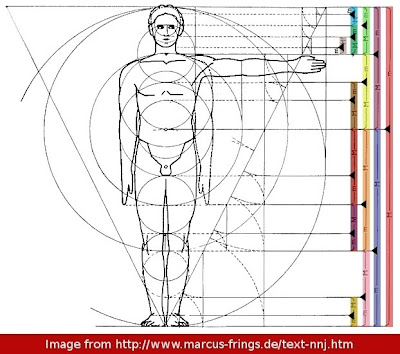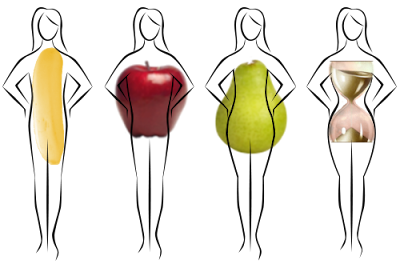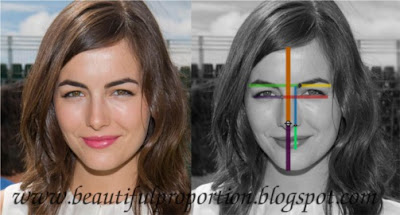The Golden Ratio, also known as Phi, popularized in the works of Leonardo da Vinci is believed to be the "Divine Proportion" present in nature, art, music, the Bible, the solar system and the universe basically.
![Golden Proportion]()
The Golden Ratio which measures approximately 1.618 can be derived through the Fibonacci numbers. You can get this ratio by dividing a number with the previous number in the sequence.
These Fibonacci numbers are achieved by adding the 2 previous consecutive numbers to obtain the next number in the sequence, starting with 0 and 1 as given values.
0,1,1,2,3,5,8,13,21,34,55,89,144,233,377, 610, 987, and so on.
The ratio between these numbers gets more consistent with 1.618, specifically at the 14th and following series.
This golden ratio is believed to be the ideal proportion often used as a standard for beautiful measures in art, architecture, number sciences and other areas including the human anatomy.
![ideal proportion]()
The figure above represents 1 unit and it's corresponding golden ratio. You can find a lot of these segments in the human body.
![body proportion]()
From the illustration above, we can see several occurrences of the golden ratio found in the human body
Sole to navel (1) : Sole to crown (Phi)
Sole to knee : Sole to navel
Navel to shoulder : Navel to crown
Knees to calf muscle : Knees to sole
Navel to mid-thigh : Navel to knees
Navel to sternum or mid-chest : Navel to base of throat
Throat base to temple or brow bone : Throat base to crown
End of calf muscle down to ankle : Calf muscle to sole
Mid-thigh to start of kneecap : Mid-thigh to end of kneecap
Navel to crotch : Navel to mid-thigh
Navel to sternum base : Navel to sternum or mid-chest
Throat base to earlobe : Throat base to top of ear or brow bone
Brow bone to hairline : Brow bone to crown
Nose to chin : Nose to base of throat
More studies are being done in finding the golden ratio in the human face and hand. But these are only some of the occurrences of the golden ratio in our anatomy. Certainly, there are more of these beautiful proportions out there ranging from the extraordinary to the mundane.
Scientists in various fields whether it be anatomy, chemistry, physics, math, astronomy, theology and also in the fields of music, architecture, and art continue to be fascinated with the golden ratio. It's even believed to be found in our DNA. Maybe this is one reason why we ourselves cannot help but admire and continue to search for the perfect body. It's in our genes.

The Golden Ratio which measures approximately 1.618 can be derived through the Fibonacci numbers. You can get this ratio by dividing a number with the previous number in the sequence.
These Fibonacci numbers are achieved by adding the 2 previous consecutive numbers to obtain the next number in the sequence, starting with 0 and 1 as given values.
0,1,1,2,3,5,8,13,21,34,55,89,144,233,377, 610, 987, and so on.
The ratio between these numbers gets more consistent with 1.618, specifically at the 14th and following series.
This golden ratio is believed to be the ideal proportion often used as a standard for beautiful measures in art, architecture, number sciences and other areas including the human anatomy.

The figure above represents 1 unit and it's corresponding golden ratio. You can find a lot of these segments in the human body.

From the illustration above, we can see several occurrences of the golden ratio found in the human body
Sole to navel (1) : Sole to crown (Phi)
Sole to knee : Sole to navel
Navel to shoulder : Navel to crown
Knees to calf muscle : Knees to sole
Navel to mid-thigh : Navel to knees
Navel to sternum or mid-chest : Navel to base of throat
Throat base to temple or brow bone : Throat base to crown
End of calf muscle down to ankle : Calf muscle to sole
Mid-thigh to start of kneecap : Mid-thigh to end of kneecap
Navel to crotch : Navel to mid-thigh
Navel to sternum base : Navel to sternum or mid-chest
Throat base to earlobe : Throat base to top of ear or brow bone
Brow bone to hairline : Brow bone to crown
Nose to chin : Nose to base of throat
More studies are being done in finding the golden ratio in the human face and hand. But these are only some of the occurrences of the golden ratio in our anatomy. Certainly, there are more of these beautiful proportions out there ranging from the extraordinary to the mundane.
Scientists in various fields whether it be anatomy, chemistry, physics, math, astronomy, theology and also in the fields of music, architecture, and art continue to be fascinated with the golden ratio. It's even believed to be found in our DNA. Maybe this is one reason why we ourselves cannot help but admire and continue to search for the perfect body. It's in our genes.
RELATED ARTICLE
• Beautiful Proportions of a Woman's Body>>






































